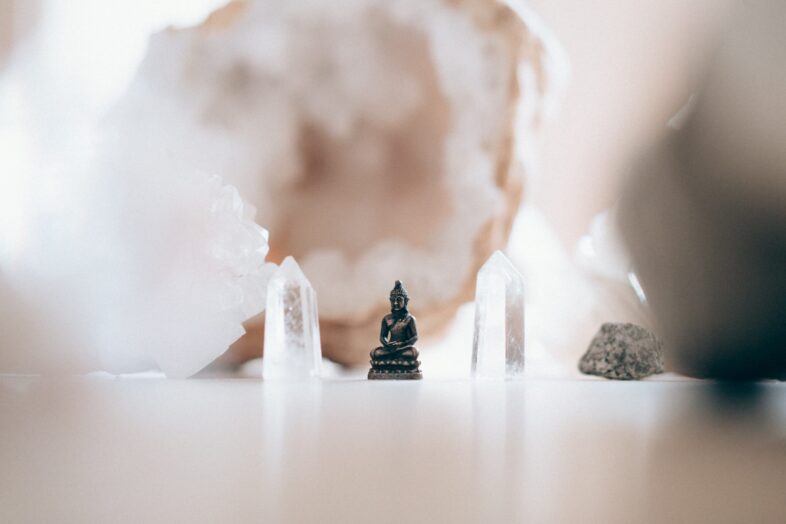In the world of guided meditation, techniques and breathing exercises play a vital role in helping you achieve a state of calm and relaxation. Whether you’re a beginner or an experienced practitioner, having a clear understanding of these techniques can enhance your meditation practice and deepen your sense of mindfulness. In this article, we will explore the various techniques and breathing exercises commonly used in guided meditation, providing you with valuable insights and practical tips to elevate your meditation experience. So, get ready to embark on a journey of self-discovery as we explore the fascinating world of guided meditation. Yes, there are indeed specific techniques and breathing exercises that are commonly used in guided meditation. These techniques are designed to help calm the mind, relax the body, and enhance the overall meditation experience. In this article, we will explore some of the most popular types of guided meditation as well as the various breathing techniques that can be incorporated into your practice.
Types of Guided Meditation
Mindfulness Meditation
Mindfulness meditation is one of the most widely practiced forms of meditation. It involves paying attention to the present moment in a non-judgmental manner. During this type of meditation, you are encouraged to focus on your breath, bodily sensations, thoughts, or any other anchor point. The key is to observe these sensations without getting caught up in them, allowing yourself to develop a greater sense of awareness and acceptance.
Loving-Kindness Meditation
Loving-kindness meditation, also known as Metta meditation, involves cultivating feelings of love, compassion, and goodwill towards oneself and others. In this practice, you will typically repeat a series of phrases or mantras that express positive intentions and well-wishes for yourself, loved ones, neutral individuals, and even difficult people in your life. It aims to foster feelings of interconnectedness and generate a sense of warmth and kindness towards all beings.
Visualization Meditation
Visualization meditation utilizes the power of imagination and mental imagery. In this practice, you are guided to create vivid mental images that depict peaceful scenes, healing environments, or your desired future outcomes. By engaging your senses and immersing yourself in these visualizations, you can evoke a deep sense of relaxation, focus, and intention.
Breathing Techniques in Guided Meditation
Diaphragmatic Breathing
Diaphragmatic breathing, also known as belly breathing or deep breathing, involves consciously directing the breath into the diaphragm, allowing it to expand fully. This technique encourages slow, deep breaths that activate the body’s relaxation response. By engaging the diaphragm, you can increase oxygen intake, decrease heart rate, and reduce muscle tension, promoting a state of calm and relaxation.
Alternate Nostril Breathing
Alternate nostril breathing is a yogic breathing technique that helps balance the flow of energy in the body, calm the mind, and enhance focus. To practice this technique, you will use your fingers to alternately close and open each nostril while you inhale and exhale through them. This rhythmic pattern of breathing can help harmonize the two hemispheres of the brain, promoting a sense of balance and harmony.
4-7-8 Breathing
The 4-7-8 breathing technique, also known as “relaxing breath,” is a simple yet powerful relaxation technique. To practice this technique, inhale deeply through your nose for a count of 4, hold your breath for a count of 7, and exhale slowly through your mouth for a count of 8. This pattern is repeated several times, helping to calm the nervous system, reduce stress, and induce a state of deep relaxation.

This image is property of images.unsplash.com.
Body Scan Technique
The body scan technique is a powerful mindfulness practice that involves systematically bringing attention to each part of the body. This practice is typically done in a lying-down position, starting from the top of the head and slowly moving down to the toes. By gently scanning and observing the sensations in each body part, you can cultivate a deep sense of relaxation, body awareness, and release any tension or discomfort that may be present.
Progressive Muscle Relaxation
Progressive muscle relaxation is a technique that involves tensing and then releasing different muscle groups throughout the body. By deliberately tensing and relaxing each muscle group, you can increase awareness of your body and its sensations, as well as release any muscular tension or stress. This practice is commonly used to promote deep relaxation, reduce anxiety, and improve sleep quality.

This image is property of images.unsplash.com.
Counting Breath Technique
The counting breath technique is a simple and effective way to focus the mind and bring stillness to your meditation practice. To use this technique, simply count each breath cycle, starting from one and continuing to ten. Once you reach ten, start again from one. If your mind wanders or you lose track, gently bring your attention back to the count. This technique helps anchor the mind to the breath and cultivate a sense of present moment awareness.
Box Breathing Technique
The box breathing technique is a breath control exercise that involves a four-step pattern of inhaling, holding the breath, exhaling, and holding the breath again. The duration of each step is typically equal, and it forms the shape of a square or a box. This technique is renowned for promoting relaxation, reducing stress, and increasing mental clarity and focus.

This image is property of images.unsplash.com.
Ocean Breathing Technique
The ocean breathing technique, also known as Ujjayi breath or “victorious breath,” is a pranayama technique commonly used in yoga and meditation. It involves constricting the throat slightly while breathing in and out through the nose, creating a gentle, flowing sound similar to the ocean waves. This technique can induce a deep sense of relaxation, enhance concentration, and promote a feeling of groundedness.
Guided Imagery Technique
Guided imagery is a meditation technique that combines visualization with narrative guidance. In this practice, you are guided to imagine and experience various sensory-rich scenes, stories, or scenarios. A trained instructor or audio recording typically leads this meditation, inviting you to immerse yourself in the detailed imagery to create profound relaxation and inner transformation.

This image is property of images.unsplash.com.
Mantra Meditation Technique
Mantra meditation involves the repetition of a specific word, sound, or phrase, known as a mantra. This technique can help focus the mind, generate positive energy, and cultivate a sense of inner peace. With each repetition of the mantra, your mind becomes more attuned to the present moment, and the vibrations of the sound can harmonize your energy and deepen your meditation practice.
Chanting Meditation Technique
Chanting meditation utilizes the repetition of sacred sounds or chants. By vocalizing specific syllables or mantras, you can tap into the power of sound vibrations and experience a deep connection to your inner self and the divine. Chanting can help calm the mind, open the heart, and create a sacred space for spiritual exploration and transformation.
In conclusion, guided meditation offers a wide range of techniques and breathing exercises that can be tailored to suit your individual needs and preferences. Whether you prefer mindfulness meditation, visualization techniques, or breath control exercises, incorporating these practices into your meditation routine can significantly enhance your overall well-being. So, take a deep breath, find a comfortable position, and embark on your journey of self-discovery and inner peace through guided meditation.

This image is property of images.unsplash.com.
Hi, I’m the Editor of Daily Guided Meditation. Meditation is not just a practice for me, but a way of life. I believe in the power of mindfulness to bring peace and balance into our busy lives. That’s why I created this website, where you can find daily guided meditations to help you on your journey of self-discovery and inner peace. Join our community and experience the transformative benefits of mindfulness through soothing meditations, relaxation techniques, and valuable resources. Prioritize self-care and start your day with intention by exploring our website today. Together, let’s find serenity amidst the chaos.


